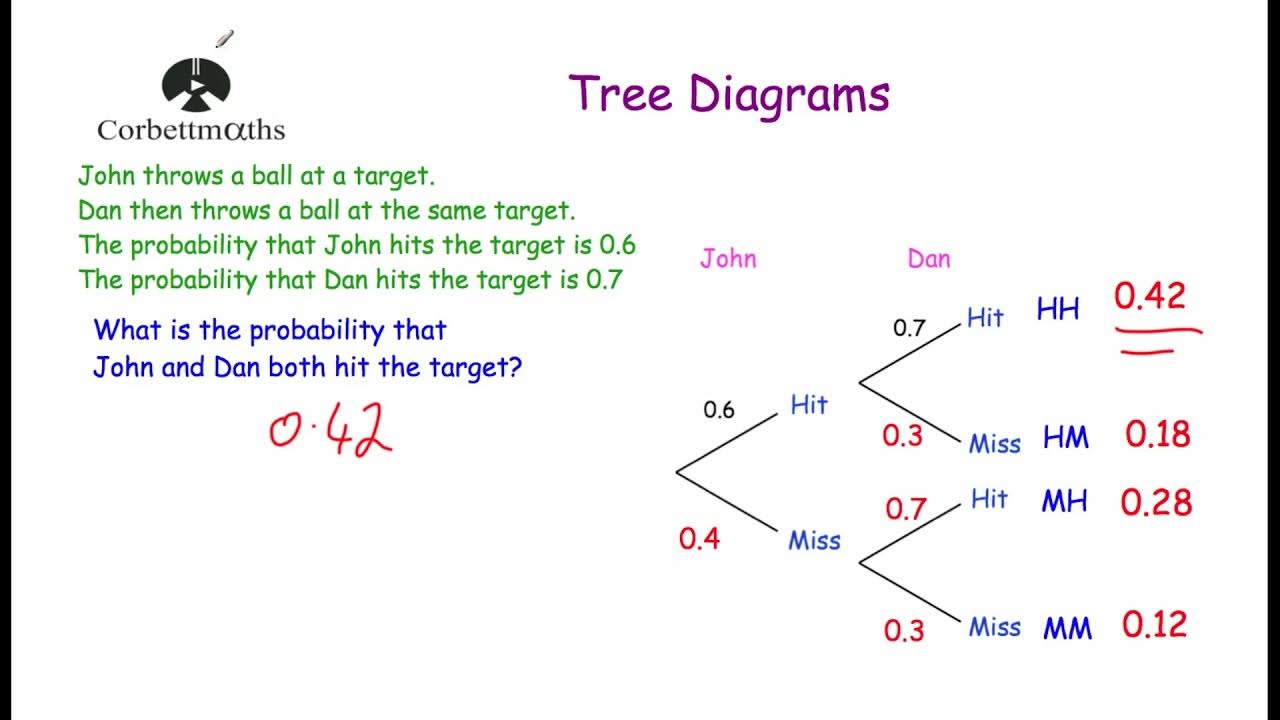Regla de la adición
Summary
TLDRThis video explains the basic principle of the addition rule in probability, which helps calculate the likelihood of either one or both of two events occurring. Using a practical example, it demonstrates how to calculate the probability of people using either public or private transport (or both) based on survey data. The video walks through the process of adding the probabilities of each event, while subtracting the intersection of the events to avoid double-counting. The final result shows that 80% of people use at least one type of transport. Viewers are encouraged to apply this rule to solve similar problems.
Takeaways
- 😀 The addition rule is a fundamental concept in probability calculation.
- 😀 The addition rule helps calculate the probability of either one event or both events happening.
- 😀 The formula for the addition rule is: P(A or B) = P(A) + P(B) - P(A and B).
- 😀 The reason we subtract the intersection probability is to avoid double-counting shared outcomes.
- 😀 A Venn diagram is often used to visualize the addition rule, where events A and B overlap.
- 😀 In the example, A represents public transportation usage, and B represents private transportation usage.
- 😀 The goal of the example is to calculate the probability of using any form of transportation (public, private, or both).
- 😀 The probability of event A (public transport) is 70%, while event B (private transport) is 40%.
- 😀 The intersection probability, where both A and B happen, is 30%.
- 😀 Using the addition rule, the probability of using at least one form of transportation is 80% (0.8).
Q & A
What is the addition rule in probability?
-The addition rule in probability allows us to calculate the probability that either event A or event B (or both) will occur. It is expressed as P(A ∪ B) = P(A) + P(B) - P(A ∩ B), where P(A ∪ B) is the probability of either event A or event B happening, P(A) and P(B) are the probabilities of A and B, and P(A ∩ B) is the probability of both events happening simultaneously.
Why do we subtract the intersection in the addition rule?
-We subtract the intersection P(A ∩ B) to avoid double-counting the probability of the overlap between events A and B. When adding P(A) and P(B), the overlap is included in both, so it needs to be subtracted to ensure the correct total probability.
How are events A and B represented graphically in the script?
-In the script, events A and B are represented as overlapping ellipses. The area inside each ellipse represents the probability of each event, while the overlapping area represents the probability that both events occur simultaneously.
What is the probability that a person uses either public or private transportation, or both, in the example given?
-In the example, the probability that a person uses either public or private transportation, or both, is calculated using the addition rule: P(A ∪ B) = P(A) + P(B) - P(A ∩ B). Substituting the values, P(A ∪ B) = 0.70 + 0.40 - 0.30 = 0.80. So, 80% of people use either or both types of transportation.
What does the intersection P(A ∩ B) represent in the transportation example?
-In the transportation example, the intersection P(A ∩ B) represents the 30% of people who use both public and private transportation. This value is subtracted to avoid counting these individuals twice when adding the probabilities of each event.
What is the importance of the addition rule in calculating probabilities?
-The addition rule is important because it provides a method for calculating the probability of either one or both events happening when the events are not mutually exclusive, meaning they can occur at the same time.
What would happen if we didn't subtract the intersection in the addition rule?
-If we didn't subtract the intersection, we would end up double-counting the probability of the overlap between events A and B, leading to an incorrect total probability that exceeds 1.
How does the survey data (70% public transport, 40% private transport, 30% both) help in applying the addition rule?
-The survey data provides the probabilities needed for applying the addition rule: P(A) = 0.70 (public transport), P(B) = 0.40 (private transport), and P(A ∩ B) = 0.30 (both). These values are used to calculate the total probability of using either or both types of transportation.
Can the addition rule be applied when events A and B are mutually exclusive?
-Yes, the addition rule can still be applied when events A and B are mutually exclusive. In this case, P(A ∩ B) = 0 because the events cannot occur simultaneously, and the rule simplifies to P(A ∪ B) = P(A) + P(B).
What does the 80% probability represent in the transportation example?
-The 80% probability in the transportation example represents the portion of the population that uses either public transport, private transport, or both. It includes everyone in the two overlapping ellipses, meaning all individuals who use any form of transportation.
Outlines

هذا القسم متوفر فقط للمشتركين. يرجى الترقية للوصول إلى هذه الميزة.
قم بالترقية الآنMindmap

هذا القسم متوفر فقط للمشتركين. يرجى الترقية للوصول إلى هذه الميزة.
قم بالترقية الآنKeywords

هذا القسم متوفر فقط للمشتركين. يرجى الترقية للوصول إلى هذه الميزة.
قم بالترقية الآنHighlights

هذا القسم متوفر فقط للمشتركين. يرجى الترقية للوصول إلى هذه الميزة.
قم بالترقية الآنTranscripts

هذا القسم متوفر فقط للمشتركين. يرجى الترقية للوصول إلى هذه الميزة.
قم بالترقية الآنتصفح المزيد من مقاطع الفيديو ذات الصلة

Tree Diagrams - Corbettmaths

Ruang Sampel dan Peluang Suatu Kejadian (Materi dan Contoh Soal diserta Pembahasan)

Probability, Sample Spaces, and the Complement Rule (6.1)

(Part 1) PELUANG MATEMATIKA SMA KELAS 10 #kurikulummerdeka #matematikasma #bukupaket

Probability Concepts for Data Analysis and Data Science | Statistics for Data Science

Kaidah Pencacahan (Bab Peluang) Matematika SMK Kelas X
5.0 / 5 (0 votes)
